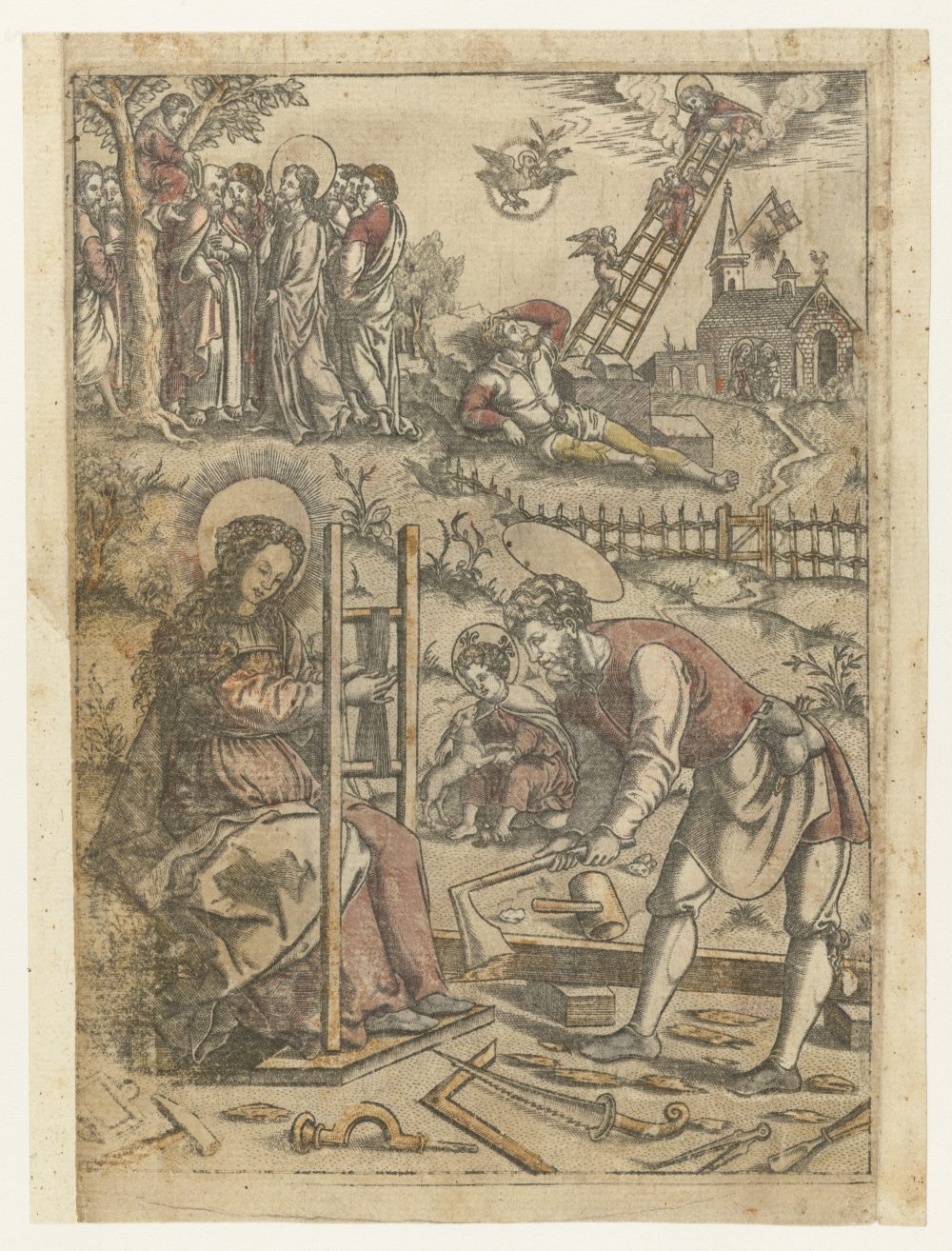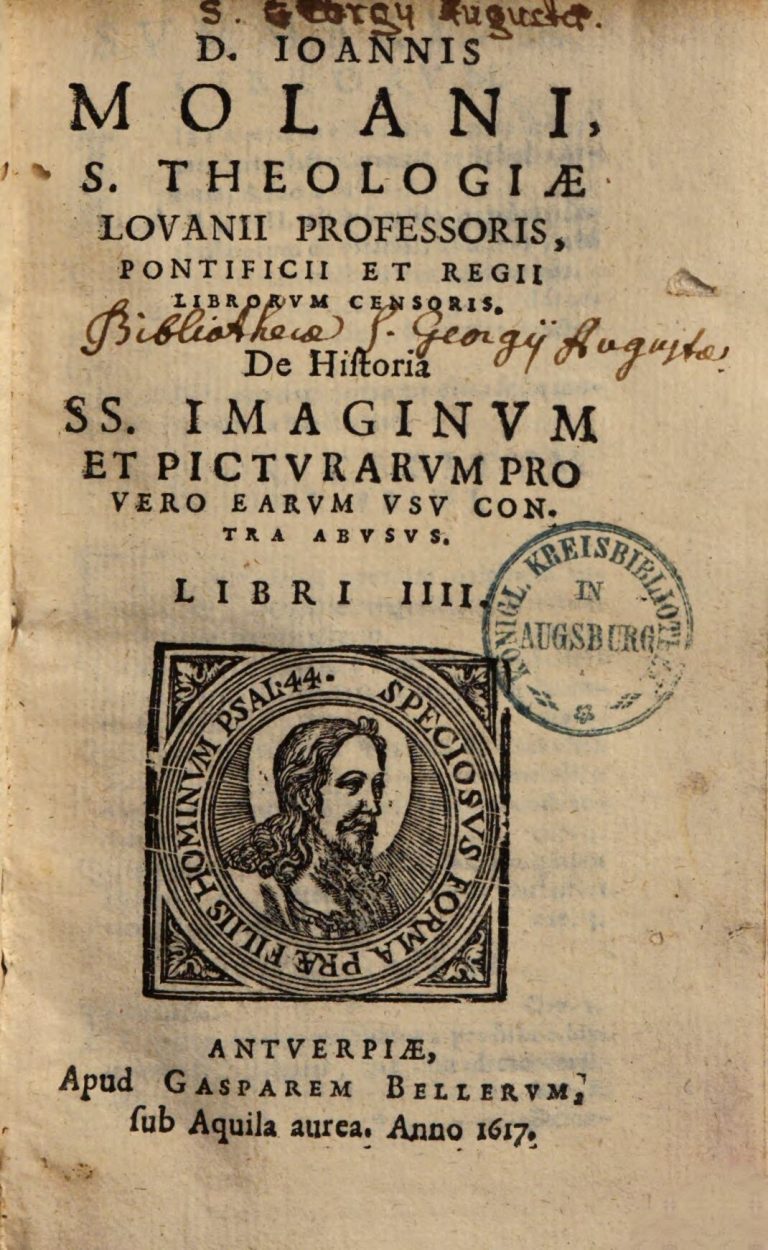
Rijksmuseum, Amsterdam, http://hdl.handle.net/10934/RM0001.COLLECT.37762
In book 2 chapter 29, Molanus continues his examination started in the preceding chapters of what constitutes a dangerous error and not and how to handle them. This chapter focuses on deviations and other questions regarding iconography that clearly do not propose a mistake. Several examples regarding the depiction of Joseph are presented to enlighten the position taken by Molanus in this matter, which can be summarised as follows: certain iconographies might have their origin in apocryphal sources, however, this does not mean that these are the only sources or that they are necessarily incorrect. These examples are not chosen randomly by Molanus, they all seem to constitute matters addressed by others before and sometimes condemned as errors, while according to him, it is not the depiction but the attributed meaning that needs correction.
The first case discussed by Molanus regards the depiction of Joseph with an axe. The combination of Joseph and the axe and not another tool is mentioned in apocryphal sources, but also by commentators, such as St. Ambrose, who mention the axe in connection to Joseph. Following St. Ambrose, Molanus argues that the axe only means that Joseph was a craftsman, and even a carpenter as many believe. Therefore, despite the lack of a clear reference to an axe in the Scriptures, depicting Joseph with one in painting does not pose any error.
“However, the latter should be careful not to denounce, in the name of their private opinion or personal judgement, an error that is clearly not an error. One can find an example regarding Joseph. When he is painted with an axe, I would readily believe that this usage comes from the book on the childhood of the Saviour: preachers such as St. Vincent and others are accustomed to quoting it in their preaching. But the choice of this tool and not another, to signify that Joseph was a craftsman if he were to use an apocryphal one, does not imply that this representation is in the error or Apocrypha itself. Ambrose also mentions the axe when he states that the craftsman Joseph was a figure of the heavenly Father who is also a craftsman: this simply means that Joseph, according to the Gospels, was a craftsman, and even a carpenter according to a rather common idea.”
“Interim diligenter caveant ex privato sensu aut iudicio aliquid errori arguant quod non est manisfeste errorneum. Exemplum est in Iosepho, is quod cum securi pingatur facile crediderim sumpum esse ex libro de infantia Salvatoris, solent enim concionatores, ut sanctus Vinentius et alii, eum in suis scaris concionibus citare. Sed habeat sanem originem suam ex Apocrypho scripto quod hoc potius fabrile instrumentum elegerint quam aliud ad significandum Iosephum fuisse sabrum, non tamen inde sequitur picturam hanc manifestem erroneam esse, aut etiam apocrypham. Securis etiam meminit Ambrosius dum explicat Ioseph fabrum, fuisse typum patris coelestis qui etiam faber est et quod non plus hic significetur quam Iosephum fuisse fabrum iuxta Evangelium et fabrum quidem lignarium iuxta communiorem sententiam.

Molanus 1996, 207.



